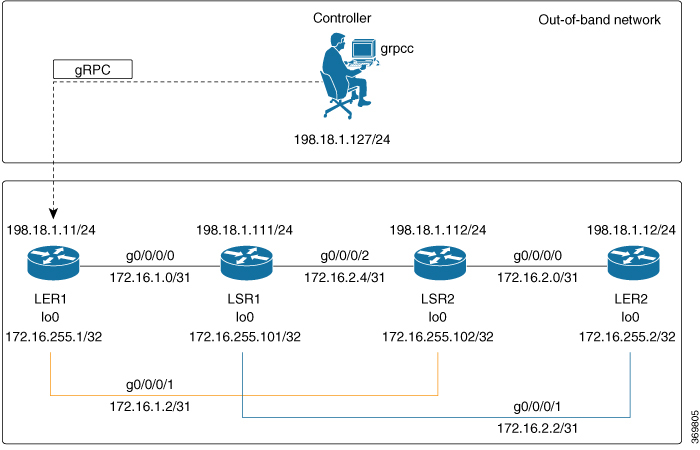gRPC Operations
The following are the defined manageability service gRPC operations for Cisco IOS XR:
|
gRPC Operation |
Description |
|---|---|
|
GetConfig |
Retrieves the configuration from the router. |
|
GetModels |
Gets the supported Yang models on the router |
|
MergeConfig |
Merges the input config with the existing device configuration. |
|
DeleteConfig |
Deletes one or more subtrees or leaves of configuration. |
|
ReplaceConfig |
Replaces part of the existing configuration with the input configuration. |
|
CommitReplace |
Replaces all existing configuration with the new configuration provided. |
|
GetOper |
Retrieves operational data. |
|
CliConfig |
Invokes the input CLI configuration. |
|
ShowCmdTextOutput |
Returns the output of a show command in the text form |
|
ShowCmdJSONOutput |
Returns the output of a show command in JSON form. |
gRPC Operation to Get Configuration
This example shows how a gRPC GetConfig request works for CDP feature.
The client initiates a message to get the current configuration of CDP running on the router. The router responds with the current CDP configuration.
|
gRPC Request (Client to Router) |
gRPC Response (Router to Client) |
|---|---|
|
|


 Feedback
Feedback